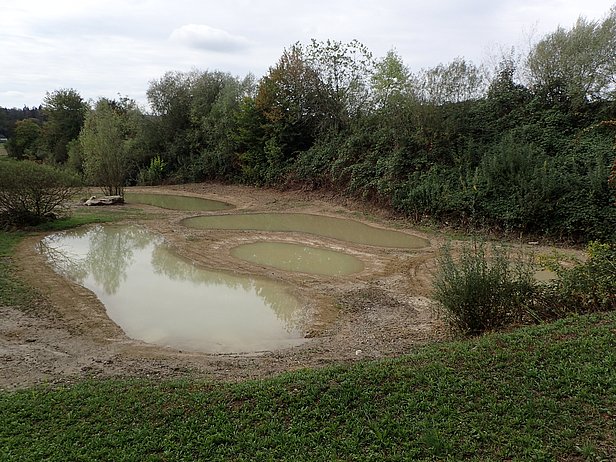
This project contributes to the Blue-Green Biodiversity Research Initiative – an Eawag-WSL collaboration focusing on Biodiversity at the interface of aquatic and terrestrial ecosystems.

Habitat loss and fragmentation are major threats to biodiversity worldwide. The persistence of many species depends on a functional ecological infrastructure, that is the availability of suitable habitat and connecting corridors. A group that is particularly dependent on a functional ecological infrastructure are amphibians. They require well-connected suitable aquatic (blue) and terrestrial (green) habitat to fulfill their complex life cycle. Suitable aquatic habitat is required for breeding and larval development, suitable terrestrial habitat for juvenile and adult life, and corridors for seasonal migration and inter-population dispersal. Given the widespread loss of amphibian breeding sites in Switzerland in the 20th century, and the intensive use of Swiss landscapes, it is not surprising that 70% of amphibian species are red-listed in Switzerland. To date it is not well understood, what conditions must be met to create a functional blue-green infrastructure for amphibians.
In this project, we analyze how local and landscape-scale characteristics influence the blue-green infrastructure used by amphibians and how well newly constructed sites contribute to it. We study a unique long-term monitoring dataset of hundreds of existing and newly built breeding sites to ask (1) how the colonization of newly created ponds by amphibian species relates to characteristics of the ponds (e.g. area, breeding status) and the surrounding landscape (e.g. connectivity to other ponds, landscape resistance); and (2) how long the time lags are until newly created ponds get colonized, and what determines their length. Our study will provide species-specific as well as community-level recommendations regarding the functioning of ecological infrastructure for promoting amphibian biodiversity in Switzerland.
Project details ¶
Project team ¶
Project lead: Dr. Ariel Bergamini (WSL) und Prof. Dr. Christoph Vorburger (Eawag)
Post doc: Helen Moor
Collaborators ¶
Simon Egger (Kanton Aargau), Rolf Holderegger (WSL), Benedikt Schmidt (info fauna karch & UZH)
Project duration ¶
2020 - 2021
